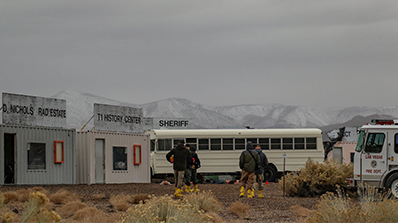In the wake of the 1995 Oklahoma City bombing, a clear need crystalized to train responders in counterterrorism to prepare them for recovery efforts for possible future attacks. Thus, the National Domestic Preparedness Consortium created the Nevada National Security Site’s (NNSS) Counterterrorism Operations Support (CTOS) program. Its mission: to prepare emergency responders for every potential act of terrorism against the U.S.
Since that time, CTOS has become the nation’s premier training organization for radiological/nuclear prevention and response. More than 280,000 first responders have gained invaluable skills through CTOS’s training since September 11, 2001.
After 9/11, the courses evolved to focus on radiological/nuclear training. “The program was bombarded with demand,” said Elsia Gorden, CTOS schedule coordinator. As the nation reckoned with the attacks, registration for the specialized training tripled.
The program is taught by emergency responders and managers, law enforcement, radiological and nuclear subject matter experts, and personnel with extensive military experience. Program participants are typically federal, local, tribal and regional first responders from across the nation.
The NNSS offers one-of-a-kind, hands-on experience. “We help alleviate inherent fears that most [people] have when dealing with radiation,” said Latrelle Smith, CTOS principal training coordinator. “These students gain a higher sense of confidence with mitigating a radiological/nuclear incident.”
After 9/11, the 40-acre Radiological/Nuclear Weapons of Mass Destruction Exercise Site (T-1) at the NNSS was updated to simulate an American city attacked by terrorists using improvised nuclear devices or radiation dispersal devices. It is a scene out of an Armageddon-themed movie: The streets are strewn with crashed and damaged vehicles, its downtown area littered with damaged buses and cars. A contaminated restaurant and strip mall and an airliner debris field add to the realistic training experience.
T-1 is unlike any site in the U.S. as the ground soil emits a small amount of radiation remaining from four nuclear devices detonated between 1952 and 1957. The residual radiation poses minimal risk to participants while offering unique opportunities to learn techniques required in an actual incident. Each participant, donned in protective equipment, trains with radioactive material in a classroom setting and in scenario-based exercises.
Students receive an unparalleled training experience that taps into extensive radiological expertise within the NNSS. “Our week of training is unmatched when you consider the mix of lecture and hands-on training provided to the participants,” says Smith.

